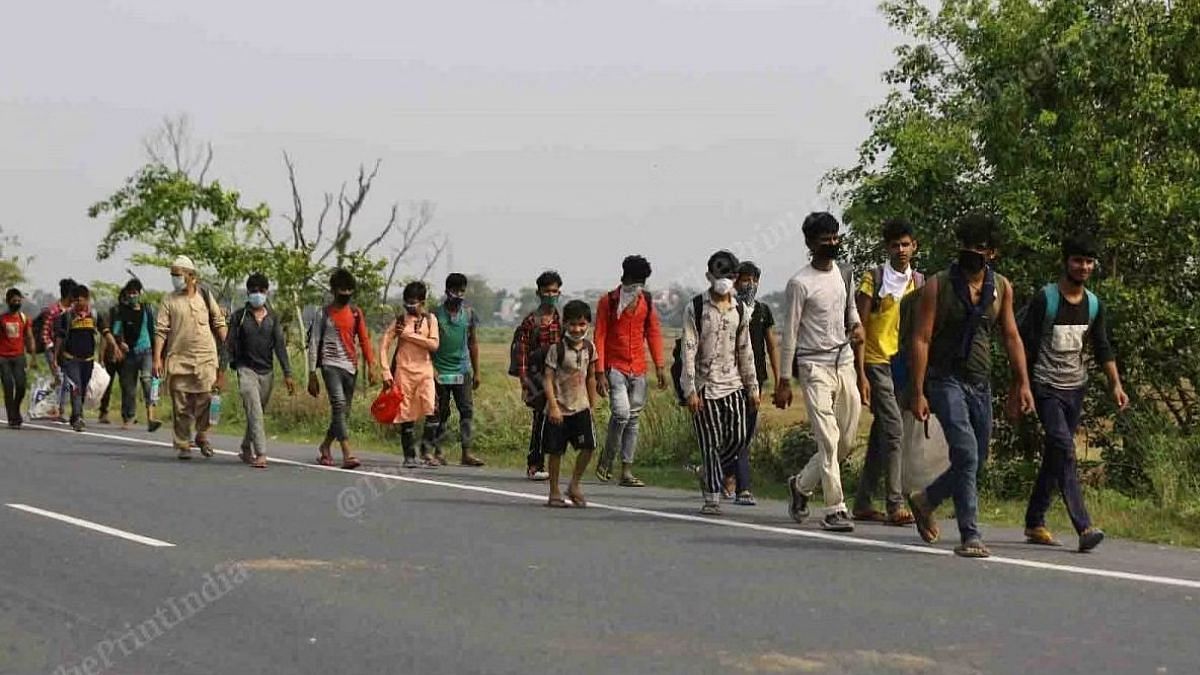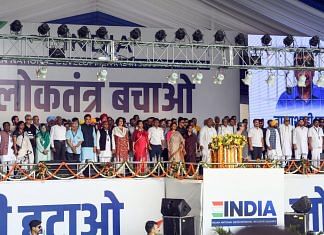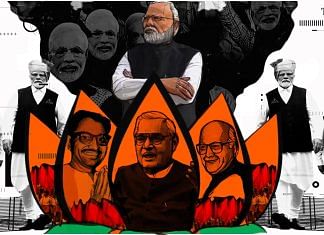Thank you dear subscribers, we are overwhelmed with your response.
Your Turn is a unique section from ThePrint featuring points of view from its subscribers. If you are a subscriber, have a point of view, please send it to us. If not, do subscribe here: https://theprint.in/subscribe/
Last week, social media platforms were thronged with alleged rumors of migrant workers being fatally assaulted in Tamil Nadu. While the officials were quick to dismiss the violence laden videos as fake, there is no denying the fact that such attacks have been a sad reality in the past. The Tamil Nadu Chief Minister and the Governor quickly shifted to damage control mode and called their state ‘safe for migrant labourers’ but that wasn’t enough to stop thousands of migrants workers from fleeing the state in packed trains. This is reminiscent of the large scale reverse migration of workers to their home states during the Covid-19 lockdown three years ago that caused significant disruptions in the state’s economic activity. Despite the migrant workers being the supposed backbone of many high income states, why do they always have to face the same fate and disrupt their lives every few months?
Do we have adequate laws to protect interstate labourers?
As per the Inter-State Migrant Workmen Act, 1979, the establishment which proposes to employ migrant workers is required to be registered with destination states. The contractors are also bound to get a licence from the concerned authority of both the states involved – home state and the destination state. The Act applies to all establishment employing five or more migrant workmen from other States; or if it had employed five or more such workmen on any day in the preceding 12 months. But like most other well meaning laws, the issues are in the implementation.
What has the government been up to?
The Ministry of Labour and employment proposed developing a National Database of Unorganised Workers (NDUW), connected to their Aadhaar. This will ensure that the government is able to extend the benefits of the social security schemes to these workers as effectively as possible. There is no dearth of welfare schemes for the workers. Some of them include Pradhan Mantri Garib Kalyan Yojana, Garib Kalyan Rojgar Abhiyan, Pradhan Mantri SVANIDHI Scheme, One Nation One Ration Card, etc.
Labour Bureau has been tasked with conducting the All India Survey on Migrant Workers, as shared by Minister of State for Labour and Employment recently in the Lok Sabha. Not just this, the Ministry of Minority Affairs, Department of Empowerment of Persons with Disabilities, Ministry of Labour & Employment, and some other Ministries provide scholarships to different target groups of students including children of Migrant workers through the National Scholarship Portal.
In 2021, Jharkhand rolled out the ‘Safe and Responsible Migration Initiative’ (SRMI), for systemic registration of migrant workers. The aim is to be able to track and map the labourers who decide to move out to other states for work. Jharkhand government is also planning to set up help desks, called the ‘labour consulates’ in various states with a significant population of Jharkhand workers.
‘Stateless’ Indians?
As per the figures from 2011 Census, total internal migrants in India are close to 45 crore, including 5.4 crore inter-state migrants. This number is highly underestimated. Most of these workers lose out on their most basic democratic right – Right to vote which is bound by residency criteria, resulting in their disenfranchisement. It is not fair to expect these migrants workers to go back to their home states just to vote. Unsurprisingly, the 2019 Lok Sabha elections saw the lowest voter turnout in labour exporting states of Bihar and Uttar Pradesh – 57.33% and 59.21% respectively, much below the national average of 67.4%.
Existing laws allow people to get themselves registered at their place of “ordinary residence”, but it is extremely difficult for the migrant labourers to get residence proof for this purpose. Thus, they are not a hefty enough ‘vote bank’ in most cases for either their home state or the host state to take them seriously enough. Fortunately, the Election Commission of India has proposed the introduction of remote voting facility for migrant workers with the help of remote voting machines. Electronic Corporation of India Ltd., the manufacturer of the Electronic Voting Machines, has already developed a prototype of a Multi-constituency Remote EVM (RVM) which would be capable of handling 72 constituencies in a single remote polling booth. However, progress on the implementation front is nowhere near satisfactory.
While the government has left no stone unturned to extend the olive branch to the NRIs, inviting them to the a part of well planned glitzy events, often led by the Prime Minister himself, the time has come to give equal respect to our domestic migrants since the new India will be built on their sweat and blood.
These pieces are being published as they have been received – they have not been edited/fact-checked by ThePrint.
Also read: SubscriberWrites: Norway’s success story can be blueprint for India’s sustainable growth












COMMENTS